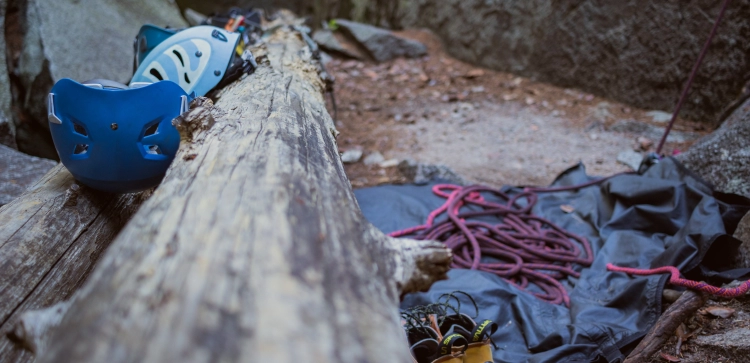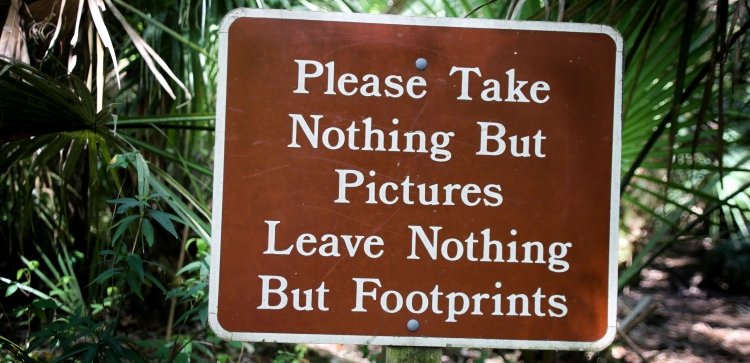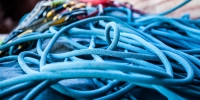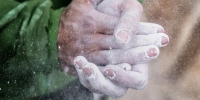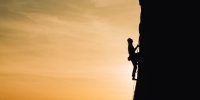What's The Difference Between Climbing Indoors And Outdoors?

Indoor climbing gyms and natural outdoor rock formations offer contrasting climbing environments. Understanding these differences can help climbers make better choices about how to prepare for outdoor climbing, and how to utilize indoor climbing to improve their outdoor technique.
- Indoor Climbing Gyms - A Controlled Environment
- Outdoor Climbing - Natural Beauty
- How Does The Gear Used For Indoor Climbing Differ From That Used In Outdoor Climbing?
- Are There Specific Techniques That Climbers Need To Adapt When Transitioning From Indoor To Outdoor Climbing?
- Adapting To Outdoor Climbing - Technical Adjustments
- What Are The Advantages Of Climbing Indoors, And Conversely, The Advantages Of Climbing Outdoors?
- Advantages Of Indoor Climbing - Training And Consistency
- Advantages Of Outdoor Climbing - Natural Beauty And Challenge
- How Can Climbers Decide Whether Indoor Or Outdoor Climbing Is The Right Choice For Them?
Indoor Climbing Gyms - A Controlled Environment
- Predictable Conditions: Indoor gyms offer consistent temperature, lighting, and weather conditions, making climbing possible year-round, regardless of the outside weather.
- Artificial Holds: Gyms use plastic holds with marked routes of varying difficulties, providing a controlled climbing experience, perfect for training and climbing progression.
- Convenient Access: Gyms are often easily accessible in urban areas, making them convenient for regular training without the need for much preparation.
Outdoor Climbing - Natural Beauty
- Varied Conditions: Outdoor climbing is influenced by natural elements like weather, rock quality, and wildlife, making each climb unique, but sometimes impossible.
- Natural Holds: Climbers rely on natural rock features, cracks, and holds, requiring adaptability and creativity in their approach. This usually also requires better route planning in order to be more familiar with the holds, their location on the routes, and how to grip them.
- Remote Locations: Outdoor climbing spots can be in remote areas, offering a chance to connect with nature and places most people wouldn't get to normally.
How Does the Gear Used for Indoor Climbing Differ from That Used in Outdoor Climbing?
Between indoor climbing and outdoor climbing, there isn't a very noticeable difference. Some climbers have specific shoes for indoor climbing and specific ones for outdoor climbing. This can be true for other gear, such as ropes and harnesses. This isn't necessarily due to gear requirements as much as it is about personal preference of using different gear indoors vs. outdoors.
One difference that beginner climbers may notice is the absence of gear. Beginners may not yet have a full set of gear, such as a harness and rope, or even their own pair of climbing shoes. In this case, they will most likely have to buy climbing shoes and other required gear since they probably won't have a place to rent them from in the outdoors.
Are There Specific Techniques That Climbers Need to Adapt When Transitioning from Indoor to Outdoor Climbing?
Transitioning from indoor to outdoor climbing requires climbers to adapt their techniques to the natural rock environment.
Adapting to Outdoor Climbing - Technical Adjustments
- Route Finding: Climbers must learn to read natural rock features and find the best path up a route. Just like with indoor climbing, there could be different ways to get to the top, but outdoor climbing emphasizes the difficulty in reading routes and finding holds, especially for those who are new to outdoor climbing.
- Climbing Style: The style of climbing often changes outdoors, with more focus on crack climbing, stemming, and smearing. Many first-time outdoor climbers notice a difference in the holds they use in comparison to indoor climbing, as some of the holds on the rock don't always feel like actual holds you would use.
- Gear Placement: Learning to place protection gear safely and efficiently is essential for outdoor sport climbing and trad climbing and for safety.
What Are the Advantages of Climbing Indoors, and Conversely, the Advantages of Climbing Outdoors?
Both indoor and outdoor climbing offer unique advantages that cater to different preferences and goals. Each also contributes to the other in their own way by training different climbing elements.
Advantages of Indoor Climbing - Training and Consistency
- Regular Training: Indoor climbing gyms provide a controlled environment for consistent training. It's much easier to make your way to an indoor climbing gym and to just start climbing. Indoor climbing also makes progression easier as there are more routes and training possibilities.
- Community: Climbers can connect with a local climbing community at gyms, allowing them to learn from other experienced climbers and to train with them.
- Skill Development: Gyms allow climbers to focus on improving specific techniques and strengths by having more available routes that allow them to train these techniques and work on their weaknesses.
Advantages of Outdoor Climbing - Natural Beauty and Challenge
- Scenic Settings: Climbing outdoors offers breathtaking views and a connection to nature. This enhances the whole climbing experience.
- Adventure: Outdoor climbing presents a sense of adventure and exploration in remote locations, especially when the crag has a long approach through the mountains and wilderness.
- Mental Challenge: Climbing on natural rock formations often requires problem-solving and adaptability, even more so than indoor climbing requires.
How Can Climbers Decide Whether Indoor or Outdoor Climbing Is the Right Choice for Them?
The choice between indoor and outdoor climbing depends on individual preferences, goals, and circumstances. Many climbers prefer to do them both while setting outdoor problems and grades as their main goal, and indoor climbing as training for outdoor climbing.
Choosing Your Climbing Path - Personal Considerations
- Goals: Consider your climbing objectives. Indoor climbing may be better for skill development, while outdoor climbing offers adventure and natural beauty.
- Accessibility: Evaluate the proximity of climbing gyms and outdoor climbing areas to your location.
- Weather and Season: Consider the weather and season when planning your climbing trips.
Conclusion
Climbing can be done indoors or outdoors. Indoor climbing provides a structured environment for practice and community, while outdoor climbing offers adventure and natural challenges. The choice between the two depends on personal preferences and goals.


